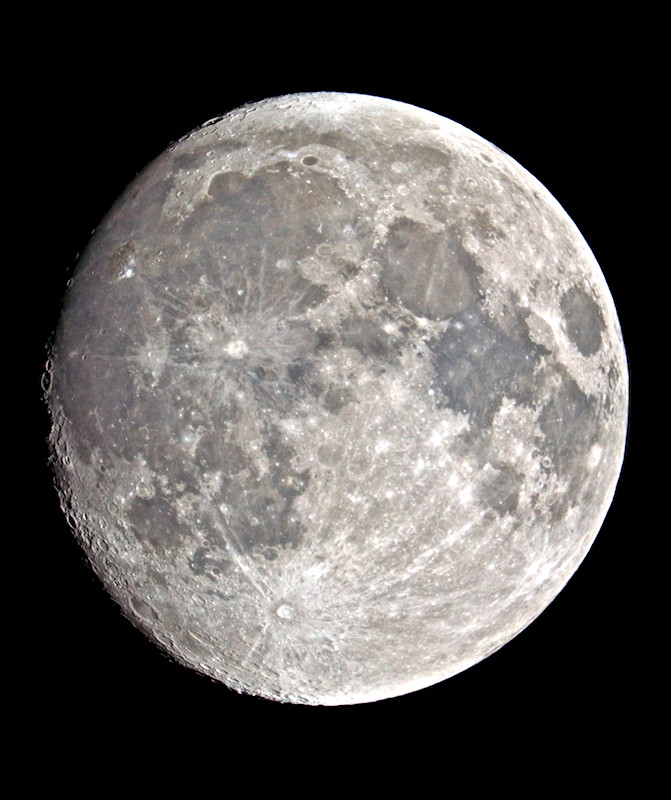
ISS, Crater Pythagoras
Posted: 7 January 2012
I opened the observatory Friday, 6 January 2012, at 1804 MST, 63°F. The sky was clear and there was no breeze blowing this night. At 1808 MST, slewed the 8" telescope to the waxing gibbous moon, high in the eastern sky. I then updated the TLE in the AutoStar for the upcoming pass of the International Space Station (ISS). This pass would be low along the western horizon and not very bright. Therefore, it would not be an ideal pass for imaging since the ISS would be distorted by the atmosphere and be very small due to its distance from me. Since my recent ISS imaging attempts at high magnification were not very successful, I decided to start over at prime focus and determine a suitable exposure setting for ISS imaging before increasing the magnification in subsequent attempts to bring out more detail. This pass would give me a chance to do that. I set the D7000 DSLR for 1/1600sec, ISO 2000, and mounted it at prime focus of the 8". I focused using the moon, locked the focus, and tweaked the finderscope alignment. By 1821 MST, I was ready for the ISS pass to start at 1842 MST.
When the ISS pass started, the initial telescope pointing was off by several degrees. After I got the ISS centered in the finderscope, tracking was fairly good. I did a 5 minute, 11 second, HD video recording. One frame of the video had an image of the ISS that at least showed a solar panel:

The image above was cropped (a lot) from the original HD full-frame. The solar panel goes from about 10 o'clock to 4 o'clock. While the image of the ISS is not very good, it does tell me that my exposure selection should be good for future, better, ISS passes.
At 1853 MST, I went back to the moon, and began looking for a good high magnification imaging target using 206X. I selected the crater Pythagoras. Seeing was not perfect and this would be a difficult target. I then removed the diagonal, added a focal reducer and visual back, and attached the D7000 at prime focus. I took a series of exposures. This is a 1/1250sec, ISO 250 exposure, slightly cropped from the full-frame image:

I then removed the focal reducer and did a series of eyepiece projection (222X) "Hat Trick" exposures of Pythagoras. This one was at ISO 320 and is slightly cropped from the full-frame image:

I ended imaging at 1928 MST. At 1930 MST, slewed to Jupiter and viewed it at 77X and 206X. The four Galilean Moons and the Great Red Spot were visible.
Closed the observatory at 1945 MST, 53°F.
Go to the previous report.
Return to the Cassiopeia Observatory Welcome Page.